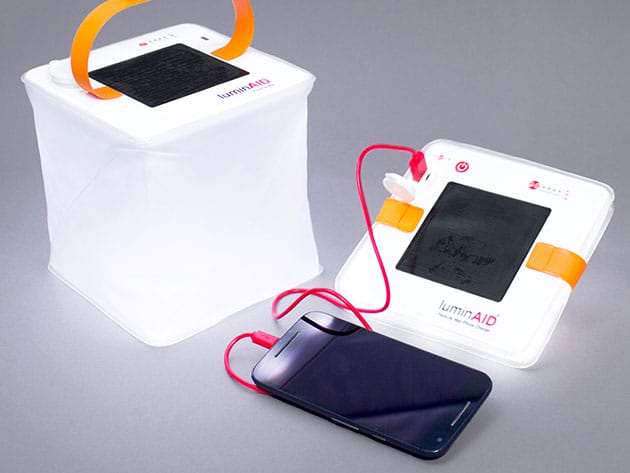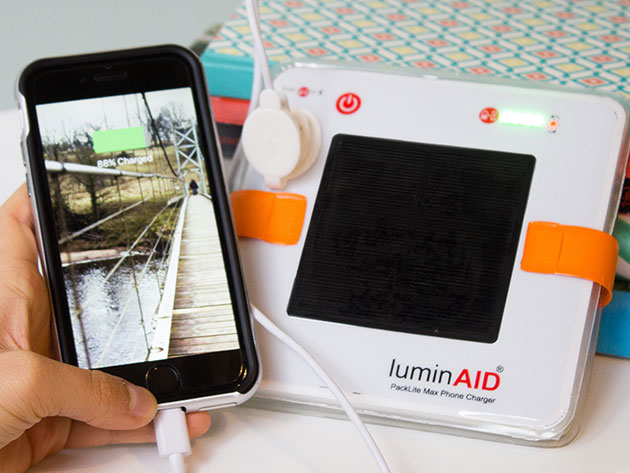LuminAID PackLite Max 2-in-1 Phone Charger for $39
August 15, 2018 / by Marco / Categories : Business, deals, design, entrepreneur, website





KEY FEATURES
Don’t go out on the trail without a PackLite! This exceptional 2-in-1 lantern and charger is inflatable, solar-powered, and completely waterproof so you can use it anywhere. This multi-purpose light will illuminate your campsite or tent, recharge during the day via the sun, and ensure your devices stay charged thanks to the built-in battery. Plus, it breaks down for easy transit and inflates in just seconds. Seriously, don’t go camping without it.
Successfully funded on Kickstarter
- Features turbo, high, medium, low, & flashing settings
- Outputs 150 lumens for 3-5 hours on Turbo mode
- Recharges via micro USB or in direct sunlight using the built-in high-efficiency solar panel
- Built-in 2,000mAh battery can recharge most cell phones to 100%
- For use in any weather, including floating on bodies of water
- Can be submerged up to one meter underwater
PRODUCT SPECS
Details
- Light output: 150 lumens
- Max run time: 50 hours (on low)
- Charge time: 1-2 hours via micro USB or 14 hours in direct sunlight
- USB output: 5V with fast charging output of 2.4 Amps
- Battery capacity: 2,000mAh
- IP67 waterproof rating
- Dimensions: 6″ x 6″ x 1″ flat, 6″ x 6″ x 6″ inflated
- 100% PVC-free, lead-free, and RoHS compliant
Includes
- LuminAID PackLite Max 2-in-1 Phone Charger
- Micro USB cable
OTHER ARTICLES YOU MAY LIKE

A SMALL BUTTON, A BIG MILESTONE: MY FIRST SUPER THANKS
Every creator has milestones that feel both modest and momentous. Your first upload. Your first comment. Your first subscriber. And then one day, among the usual notifications, a new one pops up: your first Super Thanks. Mine came from a generous viewer, Frank Castlenut, who left a donation of five dollars alongside a kind note. […]
read more
NEW RUNNING BELT ON TEST: FIRST IMPRESSIONS AND HONEST THOUGHTS
There’s a special kind of anticipation that comes with unboxing fresh kit, especially something as personal as a running belt. It’s the bit of gear that sits closest to you on every run, carrying your phone, keys, gels and—in this case—a water bottle, all while ideally disappearing from your awareness once you’re moving. Today’s subject […]
read more


